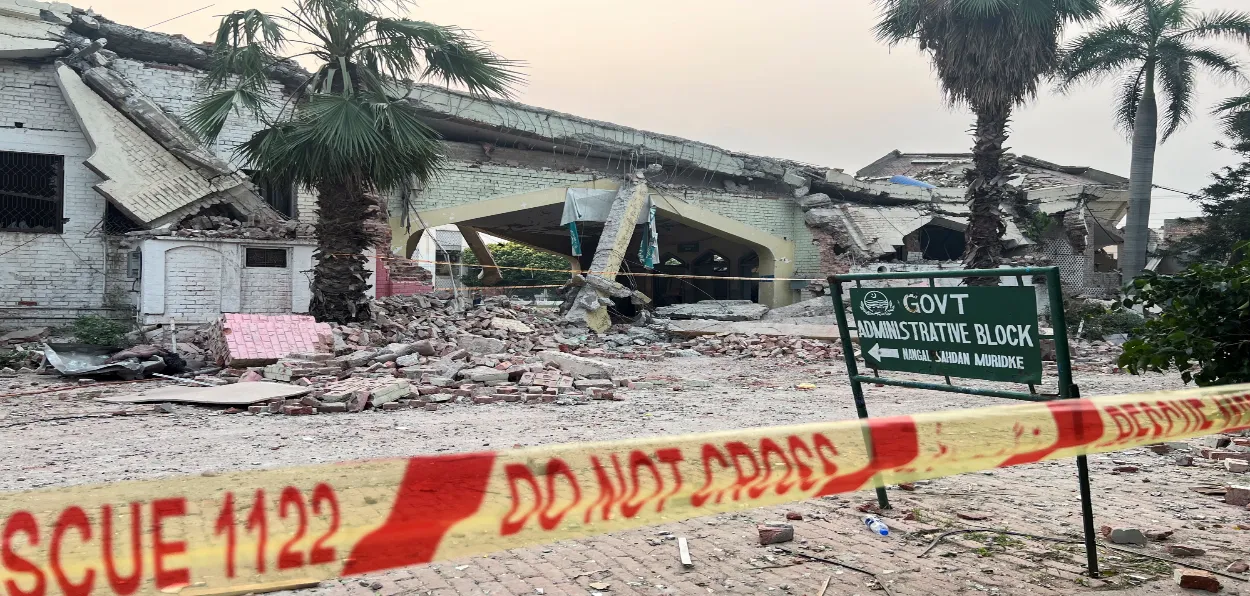
 Atir Khan
Atir Khan
At a time when Wahhabi-inspired terror networks are being dismantled globally, including in their heartlands such as Saudi Arabia, three well-known terrorist hubs continued to operate openly within Pakistan: Bahawalpur, Muridke, and Sialkot.
These sites, long identified as centers of training and recruitment of terrorists, became legitimate targets for India in the aftermath of the Pahalgam attack.
India’s response was swift, precise, and underpinned by a coherent strategic doctrine. This doctrine, articulated by Prime Minister Narendra Modi, is based on three key tenets: swift and decisive retaliation to any terror attack on Indian soil, an end to nuclear blackmail, and indiscriminate targeting of terrorists and their supporters, even across the border.
Speaking to the nation, the Prime Minister reiterated that while "this is not an era of war," it also "cannot be an era of terrorism." His statement, “blood and water cannot flow together,” encapsulates a shift in India’s approach to cross-border threats.
India’s decision to strike Bahawalpur, Muridke, and Sialkot was tactically sound and also resonated with the international community. Countries grappling with terrorism found India’s actions relatable and justified. In many ways, this mirrored actions taken by Iran against Pakistani-based terror threats, Saudi Arabia’s strikes on the Houthis, and the U.S. operation that eliminated Osama bin Laden on Pakistani soil.
By penetrating deep into Pakistan's mainland and targeting these long-protected terror enclaves, India shattered the illusion of impunity. The leadership—both political and strategic—was central to the operation. National Security Advisor Ajit Doval crafted the plan, and Prime Minister Modi approved its execution, describing the targeted institutions as “global universities of terrorism.”
While Pakistan anticipated a conventional military standoff along the border, India employed operational misdirection and caught it off guard. On the night of May 6, India executed precision strikes that reportedly eliminated over 100 militants. These attacks were not directed at civilian or general military infrastructure—thereby avoiding unnecessary escalation—but were limited to internationally recognized terrorist installations, many of which were named in UN Security Council reports.
Bahawalpur, Muridke, and Sialkot have long been associated with groups like Lashkar-e-Taiba, Jaish-e-Mohammed, and Hizbul Mujahideen—all of which are proscribed under UN resolutions. The Muridke complex, for instance, is the headquarters of Lashkar-e-Taiba and has been linked to Osama bin Laden and the 2008 Mumbai attacks. Spread over 82 acres, the complex houses a madrassa, residential facilities, commercial zones, training grounds, and even a fish farm—all allegedly repurposed for radicalization and military training.
Multiple investigations and charge sheets have traced the origins of terrorist attacks on Indian soil back to these locations, confirming their role in promoting cross-border terrorism.
India’s response, therefore, was both a matter of self-defense and a global precedent. It demonstrated that a sovereign state has not just the right but the obligation to dismantle terrorist infrastructures when the host nation refuses to act.
In retaliation, Pakistan escalated the conflict through drone strikes aimed at civilian infrastructure—targeting schools, religious institutions, and public spaces from Srinagar to Bhuj. This prompted India to intensify its operations in three phases: dismantling terror hubs, striking urban centers like Lahore, and neutralizing strategic air bases. The psychological and military impact on Pakistan was considerable.
Yet, despite the heightened tensions, India exercised restraint. The situation did not spiral into an extended conflict. A ceasefire was eventually re-established, with India having achieved its key strategic objectives. It continues to hold important diplomatic levers—such as the Indus Waters Treaty and international aviation agreements—to keep pressure on Islamabad.
ALSO READ: Operation Sindoor is India's new policy against terrorism: PM Modi
This campaign reflects a mature and calibrated national security doctrine—one that prioritizes decisive action against legitimate threats while safeguarding diplomatic credibility and economic stability. The message is unambiguous: terrorism will be met with unwavering resolve, but India will respond with legitimacy, precision, and strategic clarity.
